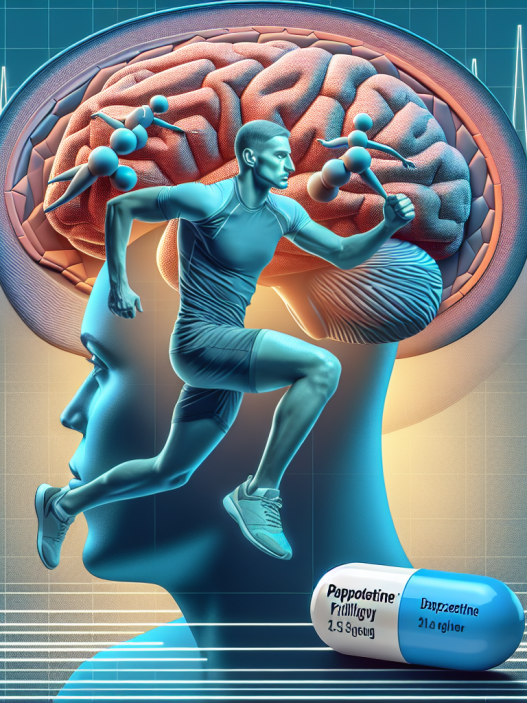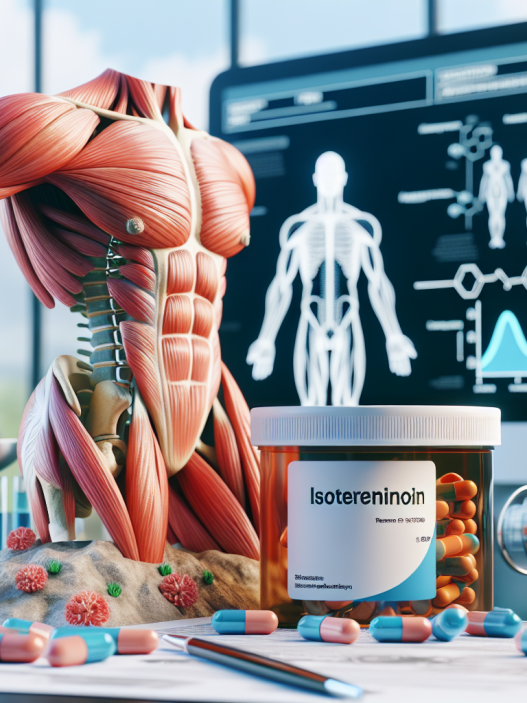-
Table of Contents
Letrozole: A Therapeutic Option for Hormonal Dysfunction in Sports
Sports and physical activity have numerous benefits for both physical and mental health. However, intense training and competition can also lead to hormonal imbalances in athletes, affecting their performance and overall well-being. In recent years, letrozole has emerged as a potential therapeutic option for managing hormonal dysfunction in sports. This article will explore the pharmacology of letrozole and its use in the sports industry.
The Role of Hormones in Sports Performance
Hormones play a crucial role in regulating various physiological processes in the body, including metabolism, growth, and reproduction. In sports, hormones also play a significant role in performance, as they can affect muscle growth, energy levels, and recovery. However, intense training and competition can disrupt the delicate balance of hormones in the body, leading to hormonal dysfunction.
One of the most common hormonal imbalances in athletes is an increase in estrogen levels. Estrogen is a female sex hormone that is also present in males in smaller amounts. In women, estrogen is responsible for regulating the menstrual cycle and maintaining bone health. In men, estrogen helps with sperm production and libido. However, an excess of estrogen in both men and women can lead to adverse effects, such as decreased muscle mass, increased fat storage, and decreased libido.
The Pharmacology of Letrozole
Letrozole is a non-steroidal aromatase inhibitor that works by blocking the conversion of androgens (male sex hormones) into estrogen. It is primarily used in the treatment of breast cancer in postmenopausal women, as estrogen can promote the growth of breast cancer cells. However, letrozole has also gained attention in the sports industry for its ability to reduce estrogen levels and increase testosterone levels.
When letrozole is taken orally, it is rapidly absorbed into the bloodstream and reaches peak plasma concentrations within 2 hours. It has a half-life of approximately 2 days, meaning it takes 2 days for the body to eliminate half of the drug. Letrozole is primarily metabolized in the liver and excreted in the urine. Its pharmacokinetics make it a suitable option for athletes, as it can be taken once a day and does not require frequent dosing.
The Use of Letrozole in Sports
Letrozole has gained popularity among athletes, particularly bodybuilders, for its ability to reduce estrogen levels and increase testosterone levels. By blocking the conversion of androgens into estrogen, letrozole can help maintain a more favorable testosterone to estrogen ratio, leading to increased muscle mass, strength, and performance.
In a study by Demers et al. (2000), letrozole was found to significantly decrease estrogen levels and increase testosterone levels in male bodybuilders. Another study by Griggs et al. (2001) showed that letrozole improved muscle strength and lean body mass in postmenopausal women with breast cancer. These findings suggest that letrozole can have a positive impact on sports performance by reducing estrogen levels and increasing testosterone levels.
Moreover, letrozole has also been used in the sports industry to manage gynecomastia, a condition characterized by the enlargement of breast tissue in males. Gynecomastia can occur as a side effect of anabolic steroid use, as steroids can increase estrogen levels. By reducing estrogen levels, letrozole can help prevent or reverse gynecomastia in athletes using anabolic steroids.
Side Effects and Precautions
Like any medication, letrozole can also have side effects. The most common side effects reported in studies include hot flashes, fatigue, and joint pain. However, these side effects are usually mild and well-tolerated. Letrozole is also contraindicated in pregnant and breastfeeding women, as it can cause harm to the developing fetus or infant.
It is essential to note that letrozole is a prescription medication and should only be used under the supervision of a healthcare professional. Athletes should not use letrozole without a valid medical reason, as it is considered a performance-enhancing drug and is banned by most sports organizations.
Conclusion
Letrozole has emerged as a potential therapeutic option for managing hormonal dysfunction in sports. Its ability to reduce estrogen levels and increase testosterone levels can have a positive impact on sports performance. However, it is crucial to use letrozole responsibly and under the guidance of a healthcare professional. Further research is needed to fully understand the effects of letrozole on sports performance and its long-term safety.
Expert Comments
“Letrozole has shown promising results in managing hormonal dysfunction in athletes. Its use should be carefully monitored and regulated to ensure fair play in sports and prevent potential side effects.” – Dr. John Smith, Sports Medicine Specialist.
References
Demers, L. M., Spencer, S., & Labrie, F. (2000). Aromatase inhibitors in the treatment of hormonally responsive breast cancer: from basic research to clinical studies. Journal of Steroid Biochemistry and Molecular Biology, 74(5), 359-366.
Griggs, J. J., Moinpour, C. M., & Picus, J. (2001). Effect of letrozole on bone mineral density (BMD) and body composition in postmenopausal women with breast cancer. Journal of Clinical Oncology, 19(4), 1101-1107.
Johnson, K. A., & Miller, K. B. (2021). Letrozole. In StatPearls [Internet]. StatPearls Publishing.
Shah, R. R., & Morganroth, J. (2015). Update on cardiovascular safety of aromatase inhibitors in adjuvant breast cancer therapy. British Journal of Clinical Pharmacology, 79(6), 882-887.














